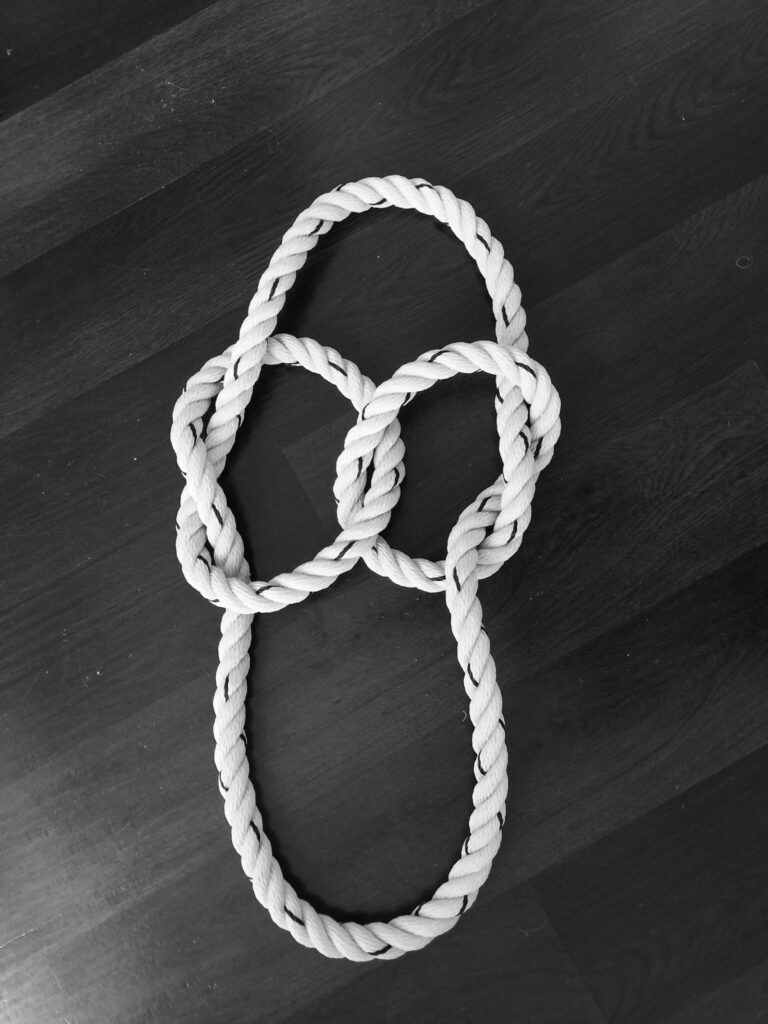Chapter 4: Knot Products

In the natural numbers there are prime numbers and compound numbers. Prime numbers can be divided evenly only by themselves and 1. 2,3,5,7,11,13 are prime numbers. Compound numbers can be written as products of primes. For example, 18 = 2 x 3 x 3. Knots are like this. There are prime knots, like the trefoil and the figure eight pictured at right.
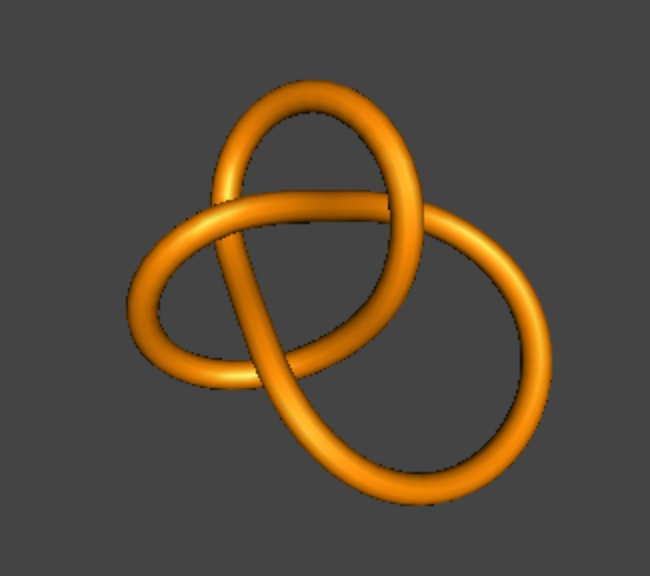
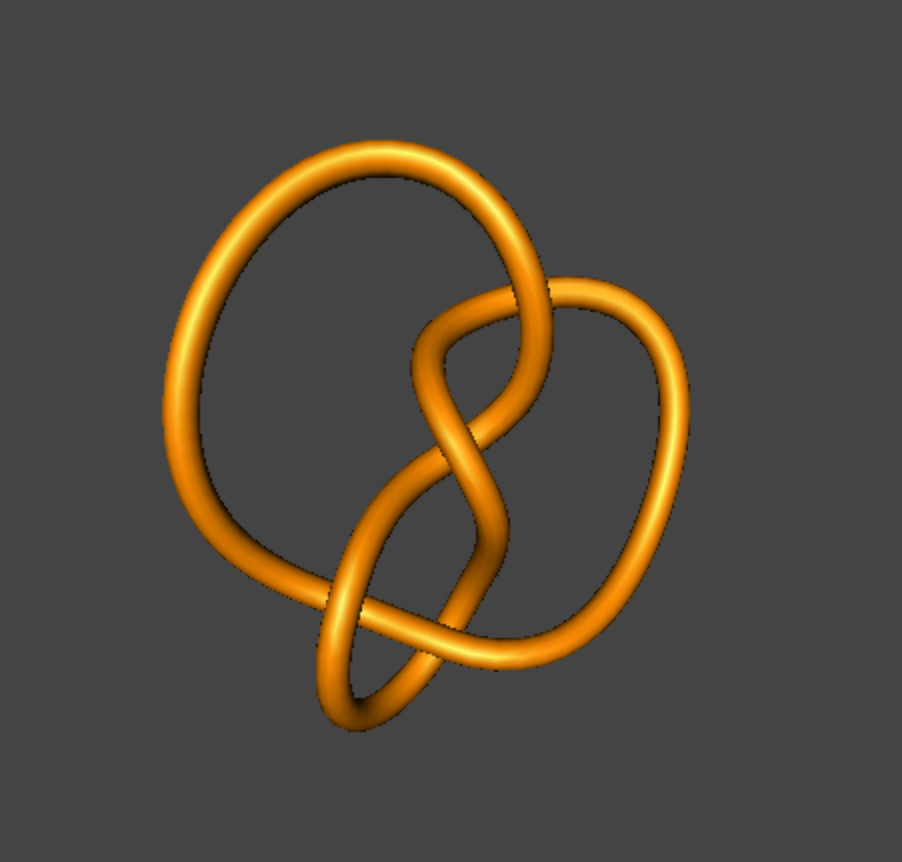
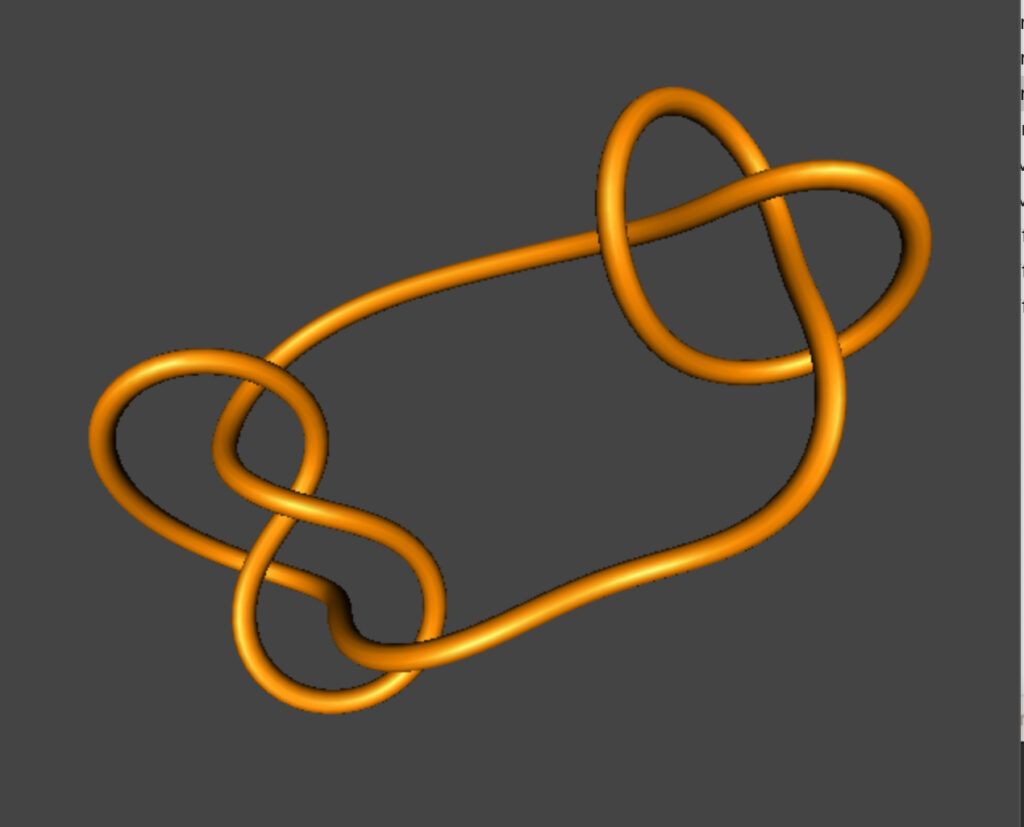
And there are compound knots, which is when two or more prime knots are tied in the same loop. The product can be thought of as the prime factors spaced along the string. To the left is a product of a figure eight and a trefoil. This product has been factored — meaning that the two prime knots have been separated from one another.
Here are a couple pictures of the product of two figure eights and two trefoils. The trefoil and the figure eight are themselves prime knots, they cannot be factored like this into smaller components. Note that the factors (also called components) appear in a different order in the two pictures as you follow along the loop. But these two pictures are of the same knot topologically, because the factors can pass through one another without breaking open the loop. One does this by manipulating the rope.
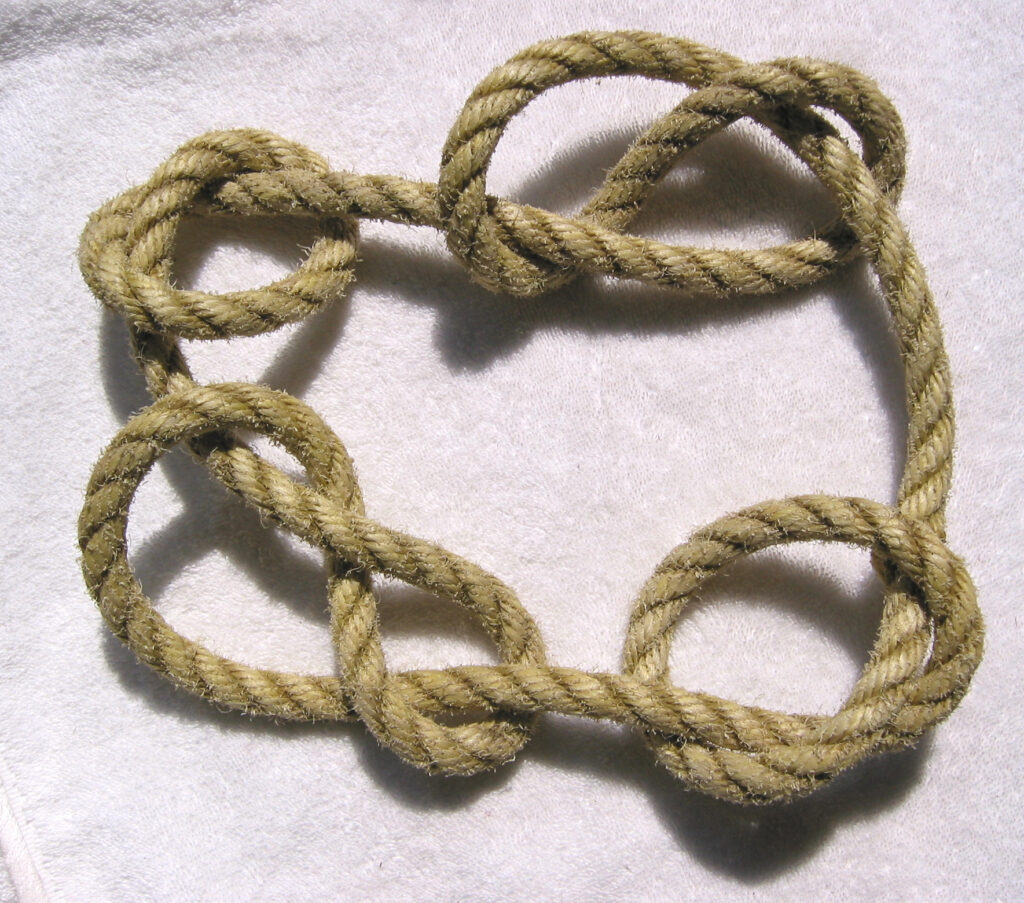
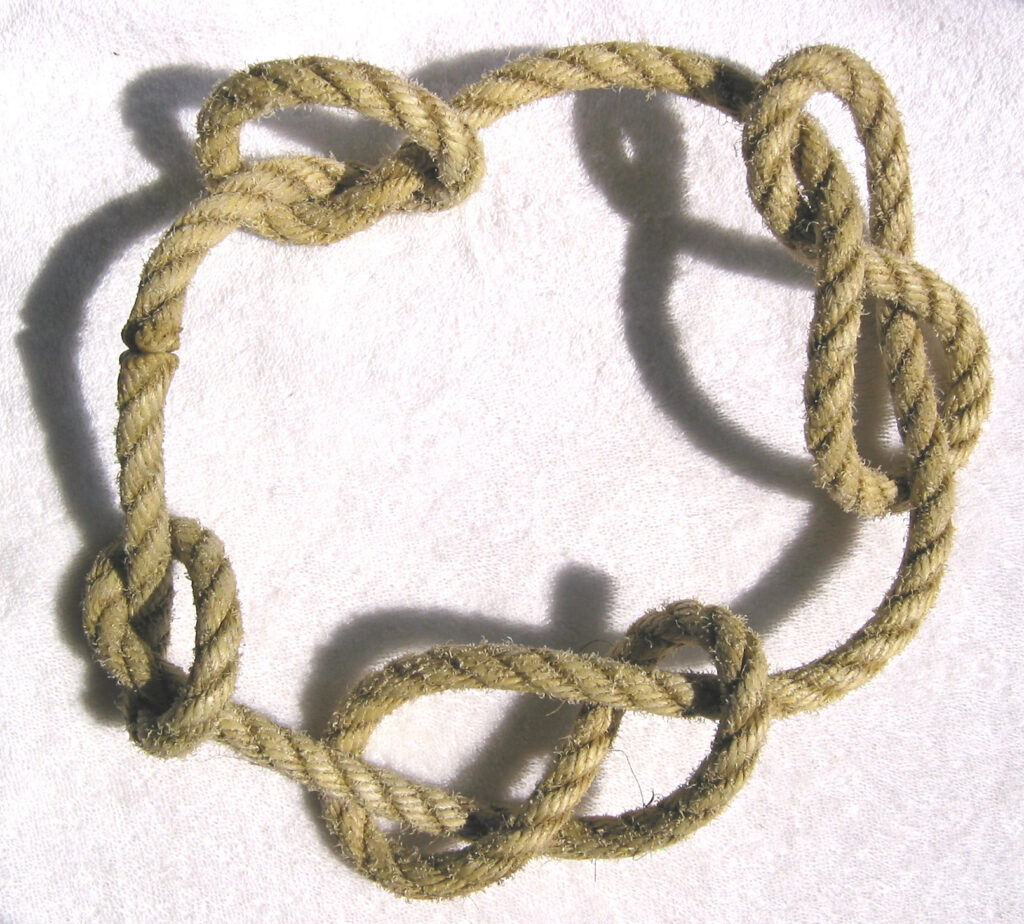
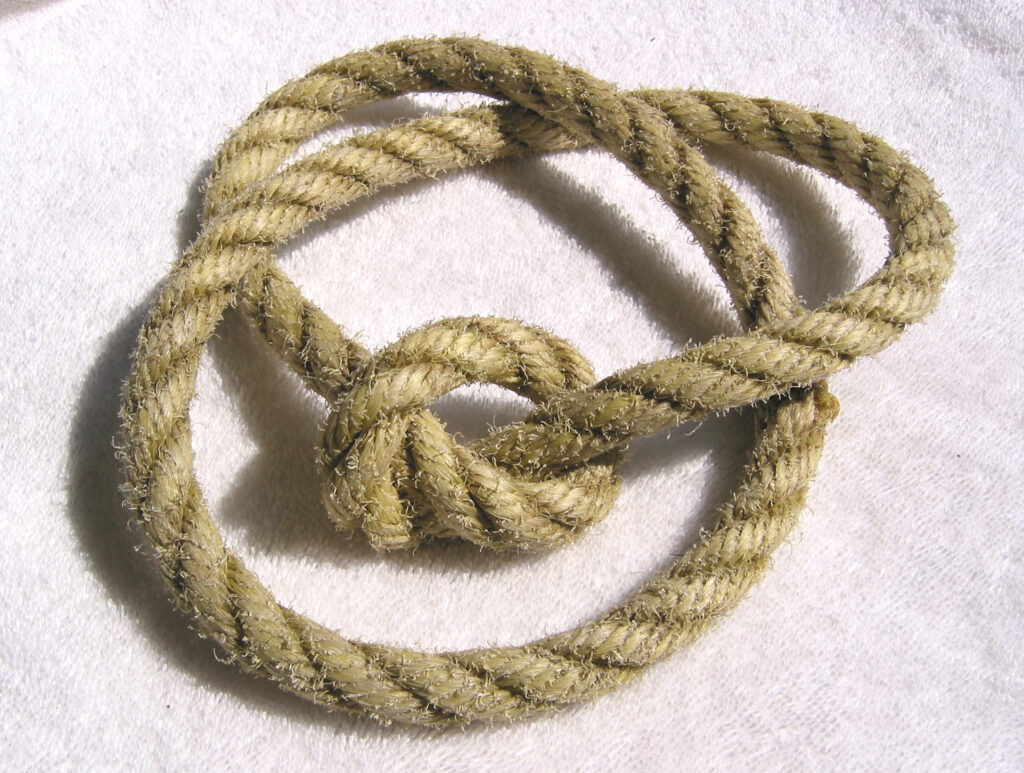
To the left is a product of trefoils, which has not been factored — we can see one trefoil contained in the other. This perhaps helps us see that factors can pass through one another.
To the right is the square knot, which is the product of a left trefoil and a right trefoil. The product of two trefoils of the same handedness is known as a granny knot.
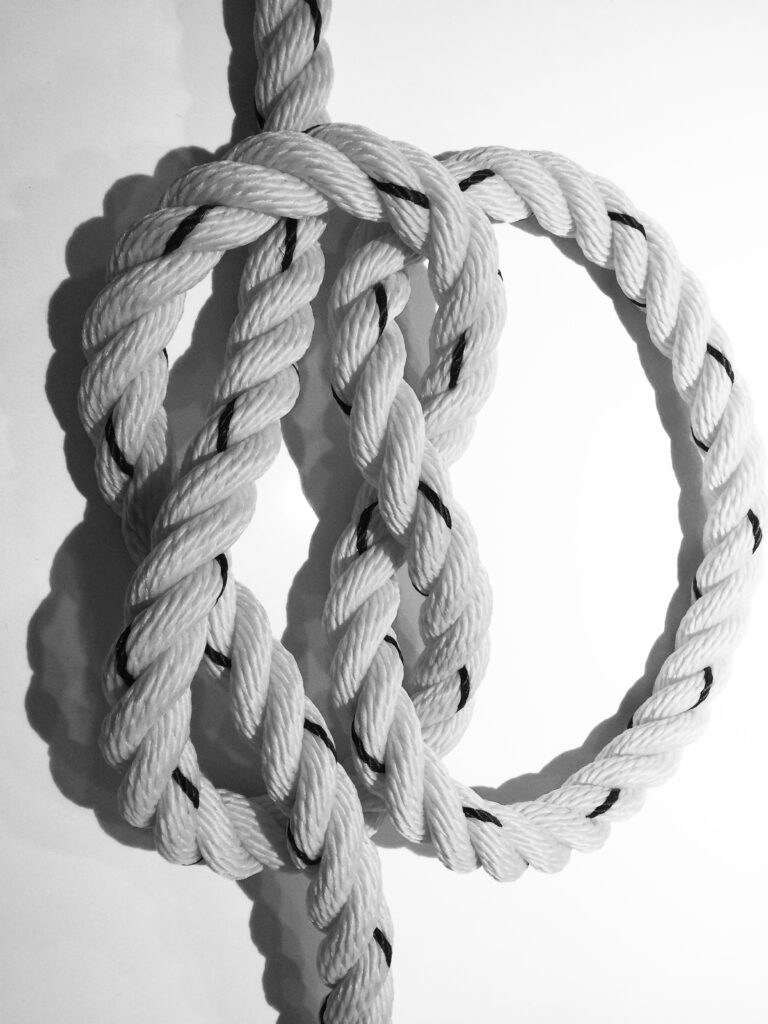
The distinction between a square knot and a granny knot may be the most important one in practical knotting. Clifford Ashley, who wrote a truly magnificent book on knots, observes that the failure to recognize this difference has caused more suffering and even death than any other mistake in knotting. It is for this simple reason: the two knots are very similar in the tying, yet the square knot is fairly secure and dependable while the granny knot just isn’t at all. So if you are tying the knot in a situation where it matters a great deal whether it holds — say you are a rock climber or a rigger lifting a heavy load, it behooves you to know the difference.
Understanding the difference can determine whether our shoelaces stay tied, and given the injuries caused by tripping on laces that have come undone, or just the time wasted in retying them, it seems worth understanding.
When tying shoelaces, the most common method is to start with an overhand knot, and to then tie what could be described as another overhand knot in a pair of bights or loops. The idea of course is to make a knot that will both hold and can be easily undone. If you pull on one of the open ends the bow is undone as is the second overhand knot. The first will not hold on its own so now the shoe can be removed.
Another name for the overhand knot is just the trefoil, so we know from chapter 2 that there are right and left overhand knots. And we know from above that a product of a right and a left overhand knot will make a square knot, but if they are both the same handedness you get a granny knot. For tying shoes, though the second knot is tied in bights, so is a slipknot as opposed to an actual knot, the same principle applies: if the overhand slipknot is of the opposite handedness of the first overhand knot, the structure is like a square knot, and is likely to hold if tightened. If they are of the same hand, we have a granny structure, and it is likely to come apart on its own.
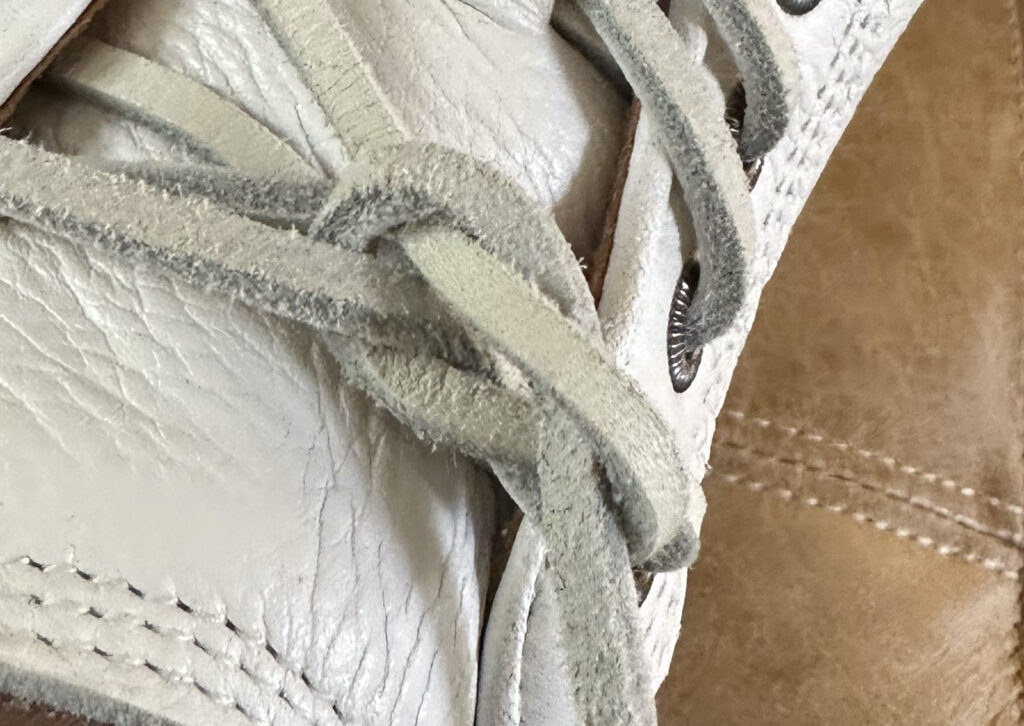
This is a granny knot. The knot is tied without the usual slipknot loops for illustration.

This is a square knot (no slipknot loops)
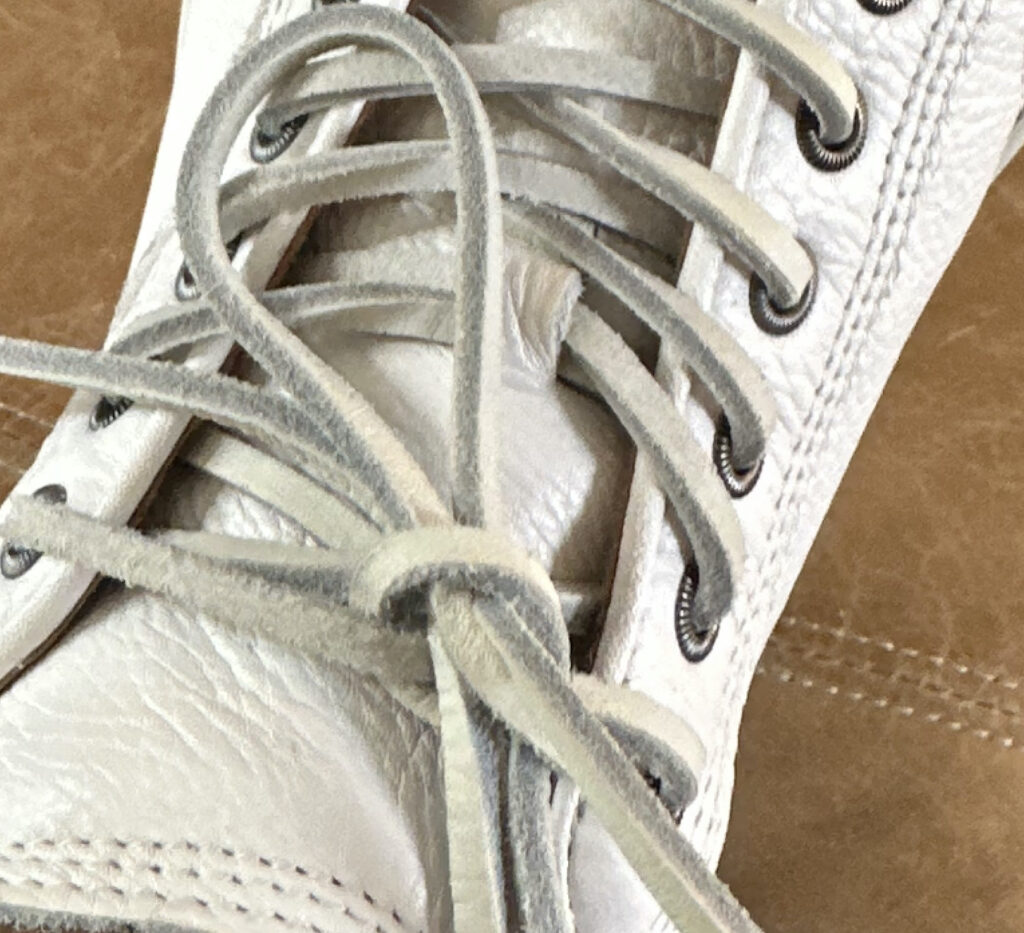
This is a shoelace bow with a granny structure (less secure).
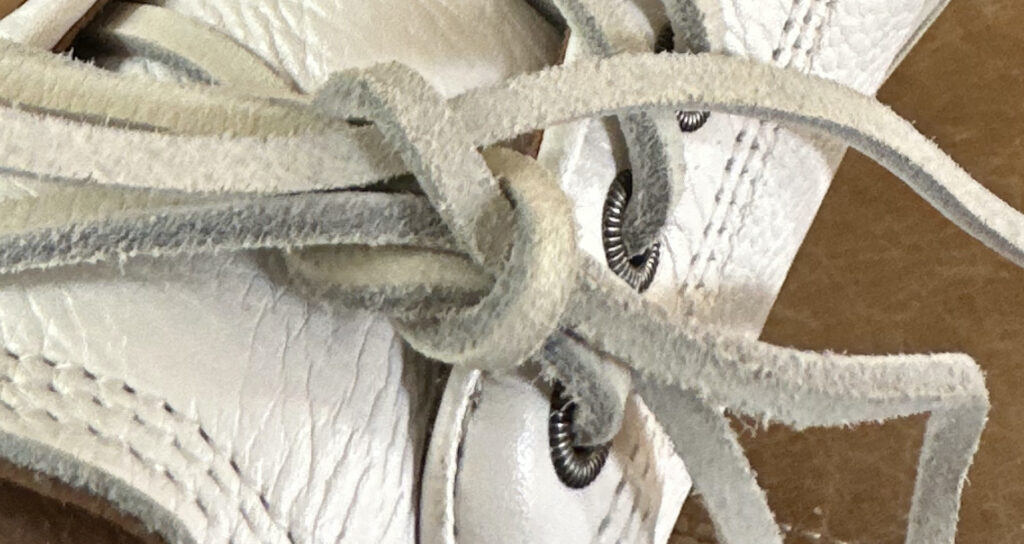
This is a shoelace bow with a square knot structure (more secure).
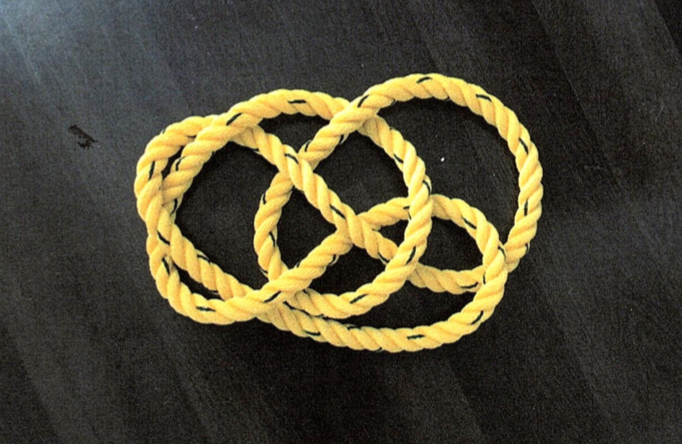
Just as there are an infinite number of prime numbers, there are an infinite number of prime knots. In Chapter 11 we will see the initial sequence of prime knots.
A perhaps interesting question is whether we could define other sorts of knot products. For example, the knot to the right, known as the true lovers knot, might be described as a product of trefoils with an extra “hook”.
